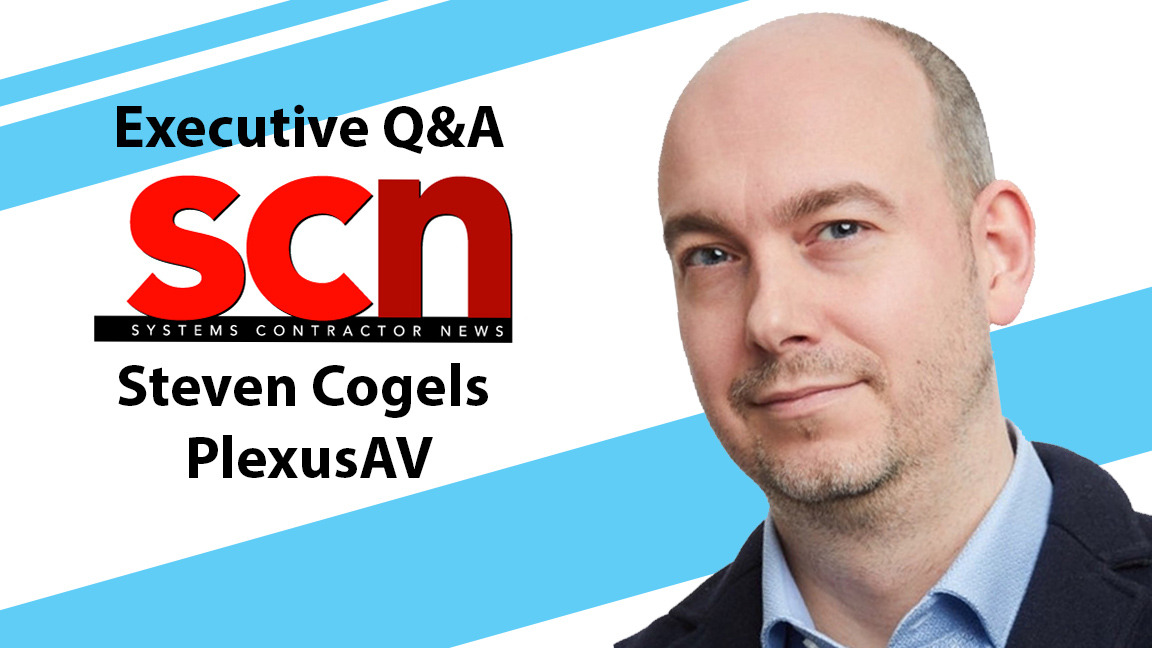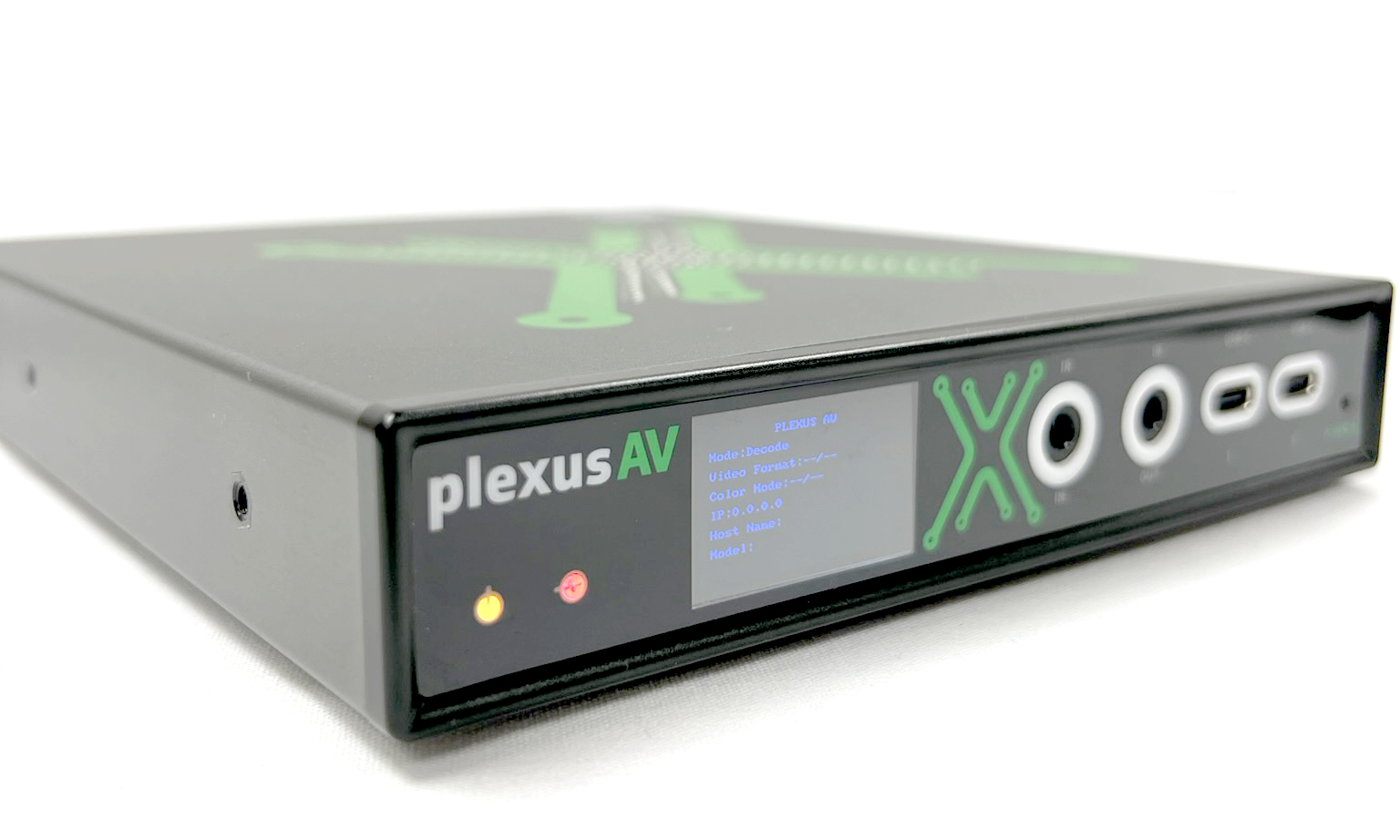
SCN: Congratulations on your InfoComm launch. How long have you been with Sencore and PlexusAV, and what are your responsibilities?
Steven Cogels: Over a year ago, I rejoined Sencore to help the company re-emerge in the professional AV industry through the introduction of PlexusAV. Previously, I worked for Sencore for almost five years as the regional sales manager for EMEA. During that time, their business in EMEA was starting and I was one of the first international employees. My prior history with Sencore made it easy to rejoin, as I know what we are capable of. My responsibilities are centered around overseeing PlexusAV, a sub-brand of Sencore, as we launch the brand and an entirely new product lineup.

SCN: What was Sencore’s thinking behind launching PlexusAV?
SC: Sencore’s re-emergence into the professional AV industry, specifically through PlexusAV, included months of careful consideration and strategizing. Rather than introducing a line of Pro AV solutions under Sencore, it was determined that a broadcast-centric approach wouldn’t suffice. The narrative, terminology, acronyms, and application-specific needs are still very different for the broadcast and Pro AV industries. PlexusAV was established to provide solutions for the modern Pro AV integrator with their customers in mind. Most importantly, the people behind PlexusAV have decades of history in Pro AV. PlexusAV may be new to the industry, but it’s powered by 70-plus years of broadcast excellence.
[Viewpoint: Pioneering the Future of AVoIP]
SCN: What are the short and long-term goals for your company?
SC: The short-term goal is to establish PlexusAV as a trusted, technology-leading brand in the Pro AV industry. We aim to eliminate traditional restrictions behind ecosystems and project design by embracing a standards-based approach. We’ve designed and engineered everything using a standard. This means integrators are not locked into any so-called ecosystem and not required to buy everything from one company. We believe that simplicity is key. The long-term goal is to expand our solutions offerings with new products, technology partnerships and an expanded global reach.
AV integrators now understand they must learn about IP and become IT experts.
SCN: Why is AVoIP so complicated, and how will PlexusAV simplify it?
SC: The introduction of AV-over-IP has created an untransparent jungle of closed, non-standardized technologies. As a result, AV-over-IP has become incredibly complex because of the introduction of proprietary solutions that have created walled gardens. These technologies have been pushed into the market, and although they have become quite successful, they’ve created an AV-over-IP jungle.
PlexusAV is simplifying AV-over-IP by eliminating proprietary technology. PlexusAV is designed and engineered as a standards-based, AV-over-IP solution to provide backward and forward-compatible, reliable, capable, and future-proof products. The human-centric design behind PlexusAV eliminates traditional restrictions behind ecosystems and project design. With PlexusAV, integrators are not locked into a customized ecosystem that limits innovation or requires more network bandwidth than necessary. Most importantly, the standards are easily accessible, although reading them in-depth might put anyone to sleep. The open standards that PlexusAV are designed upon are truly open and available for anyone.
SCN: Why the decision to embrace the IPMX standard?
SC: We carefully decided to use the industry standard for sending video across broadcast networks globally—this standard also manages networks already using 8K! It’s called SMPTE ST 2110 (also known as IPMX). PlexusAV is taking a double-faceted approach by harnessing a standard to simplify integration and empower integrators to become subject matter experts on a standard rather than a proprietary technology.
PlexusAV users don’t have to be exclusive to IMPX, either. PlexusAV has embraced emerging and established industry technologies and components to support various distribution methods. As a result, PlexusAV is eliminating the stress of picking an AV-over-IP technology. So, integrators never have to worry about choosing the right or wrong one—it just works.
SCN: What products are available from PlexusAV?
SC: At InfoComm 2023, PlexusAV introduced the AVN Series, including an IPMX transceiver (P-AVN4), Plexus Visual Array Appliance (P-AVN-VSA), and Plexus Gateway (P-AVN-GTW). The lineup of solutions in the AVN Series will be available and shipping later this year.

SCN: Anything else on the drawing board?
SC: Right now, we are laser-focused on the AVN Series. We want to gather feedback from customers and technology partners, and utilize their feedback as we continue to build our portfolio in a logical manner.
SCN: What vertical markets are you targeting?
SC: PlexusAV is designed for higher education, large venues, healthcare, corporate and enterprise, and other applications. We believe that PlexusAV will simplify AV-over-IP in various applications because we offer multiple versions of encoders and decoders to create an innovative, accessible, and human-centric ecosystem. Additionally, we’re embracing both emerging and established industry technologies, like NDI and Dante, to eliminate any concerns about compatibility with application-specific requirements.
SCN: How can systems contractors make PlexusAV part of their AVoIP solutions?
SC: We are already talking to a number of key AV distributors, system Integrators, and, of course, AV consultants. We will evaluate our strategy separately for each territory. However, in the short term, any interested parties can reach out to us via our U.S. office through our website, plexusav.com.
SCN: After spending time on the InfoComm show floor, what do you think is creating the biggest buzz for the Pro AV industry?
SC: Of course, AI was a big topic at InfoComm, as it’s becoming more mature. Algorithms driving, for instance, camera tracking, are getting better and cheaper, allowing for better meeting experiences. AV-over-IP endpoints have the potential to become the meeting endpoint, meaning that AI-based data and analytics can make their way to AV-over-IP to add even more functionality for the end user.
[Show Floor Insights: 3 Headlines from InfoComm 2023]
The market adaption of AV-over-IP is growing fast. Most manufacturers now have some form of AV-over-IP solution. This is great, as moving audio, video, and control signals to the network opens up a lot of future expandability. AV integrators now understand they must learn about IP and become IT experts. It’s somewhat of a challenge for them to learn about all the different technologies out there and select what fits their application best.
But clearly, the most exciting trend is the interest in standards-based AV-over-IP. At InfoComm 2023, we had conversations with end users, consultants, and integrators actively looking for standards-based solutions. While we expected to have to explain the value of having an open standards-based solution, we only had this conversation with a small part of the people that visited our booth. In most of our discussions, there was already and understanding about what standards benefit end users and integrators.







